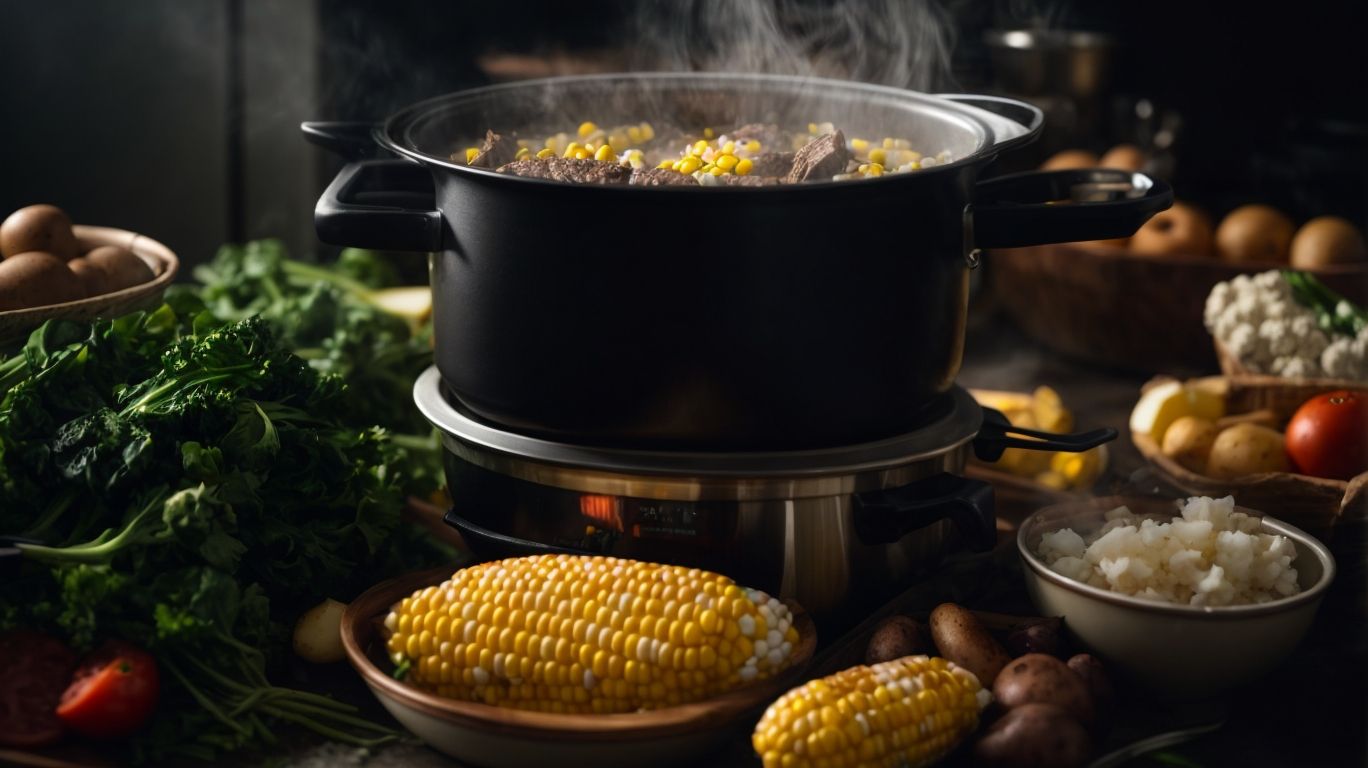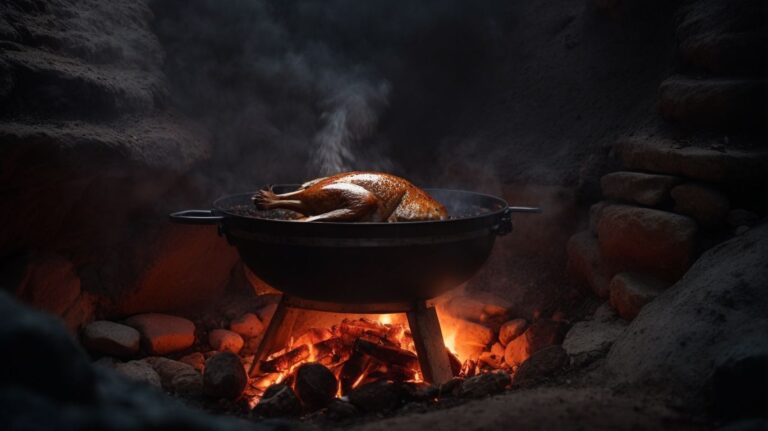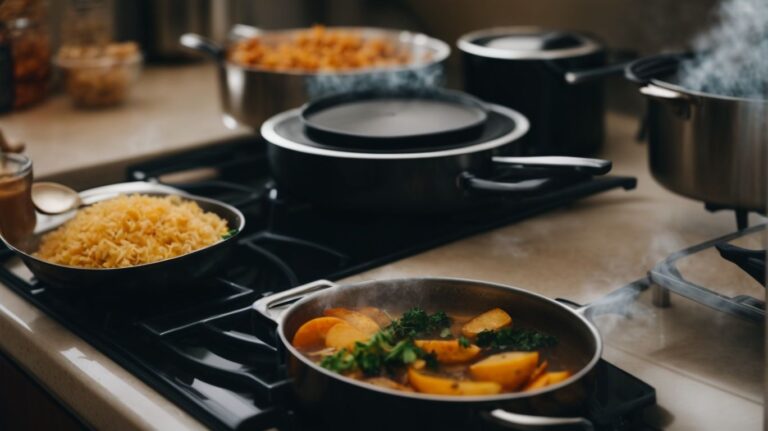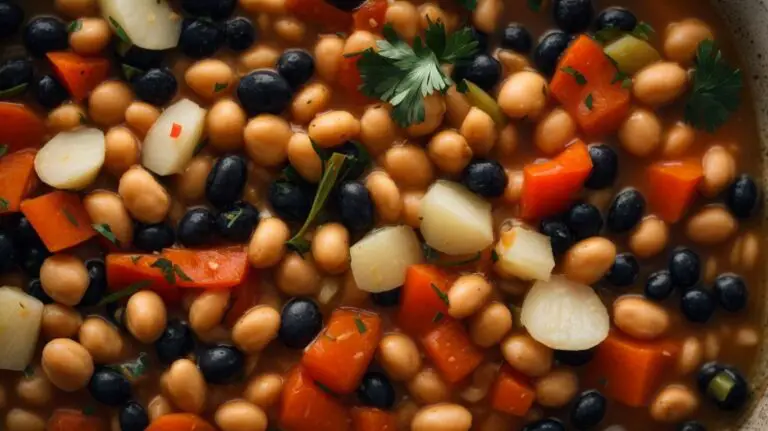How to Cook Nilagang Baka?
Welcome to the world of Nilagang Baka, a traditional Filipino beef soup that is both comforting and flavorful.
We will explore the key ingredients, different cuts of beef, preparation methods, vegetables, spices, cooking techniques, variations, and tips for making the perfect Nilagang Baka.
Whether you are a seasoned chef or a beginner in the kitchen, join me, Chris Poormet, on a culinary journey as we uncover the secrets to preparing and enjoying this delicious dish.
Key Takeaways:
About Chris Poormet and Poormet.com
Chris Poormet, the esteemed Culinary Blogger of the Year and former chef with expertise in food photography, is the creative mind behind Poormet.com, where he shares a delightful collection of recipes and culinary tips.
With a keen eye for aesthetics, Chris Poormet not only focuses on the taste and flavor of dishes but also on presenting them in an appealing manner through captivating food photography. His blog, Poormet.com, is a treasure trove for food enthusiasts, offering a fusion of innovative recipes, insider cooking techniques, and behind-the-scenes glimpses into the culinary world.
Whether you’re a seasoned cook or a novice in the kitchen, Chris Poormet’s detailed instructions and beautiful visuals make his blog a go-to destination for culinary inspiration and gastronomic adventures.
What is Nilagang Baka?
Nilagang Baka is a traditional Filipino beef stew known for its comforting flavors and tender beef, simmered to perfection.
Typically made with beef shank or brisket, Nilagang Baka is a dish that warms the soul and brings families together around the dining table. To prepare this hearty stew, the beef is slowly simmered with a medley of vegetables such as potatoes, cabbage, and corn until it reaches a melt-in-your-mouth texture. The key to achieving the rich broth of Nilagang Baka lies in the long and gentle cooking process, allowing the flavors to meld together seamlessly.
What Are the Key Ingredients of Nilagang Baka?
The key ingredients in Nilagang Baka include succulent beef sirloin, hearty potatoes, crisp cabbage, aromatic star anise, and a medley of vegetables like bok choy and celery, seasoned with onions, salt, pepper, and fish sauce.
Each of these ingredients plays a crucial role in creating the rich and flavorful broth that is synonymous with this Filipino beef soup.
The succulent beef sirloin is the star of the dish, providing a robust meaty flavor that permeates the entire soup. The hearty potatoes add a comforting starchiness, while the crisp cabbage offers a fresh crunch to contrast with the tender beef.
Not to forget the aromatic star anise, which infuses the broth with a hint of licorice-like flavor, enhancing the overall depth of the soup. The medley of vegetables like bok choy and celery not only contribute to the nutritional value but also bring a variety of textures and tastes to the dish.
The onions, salt, pepper, and fish sauce serve as the flavor-boosting agents, harmonizing all the components to create a harmonious balance of savory, salty, and umami notes in every spoonful of Nilagang Baka.
What Are the Different Cuts of Beef Used for Nilagang Baka?
Nilagang Baka utilizes various cuts of beef, such as tender beef sirloin, flavorful beef chuck, and collagen-rich beef shanks, which contribute to a gelatinous broth and tender meat, especially with tougher cuts that benefit from simmering.
When preparing Nilagang Baka, it’s essential to understand the qualities of each beef cut used. The tender beef sirloin, known for its tenderness and mild flavor, adds a delightful texture to the stew. On the other hand, the beef chuck, with its rich marbling and robust taste, imparts a depth of flavor, enhancing the overall profile of the dish.
The collagen-rich beef shanks contain connective tissues that break down during cooking, releasing gelatin that thickens the broth and creates a luscious mouthfeel. These tougher cuts not only enhance the dish’s flavor but also provide a natural way to tenderize the meat through slow simmering, resulting in melt-in-your-mouth perfection.
How to Prepare the Beef for Nilagang Baka?
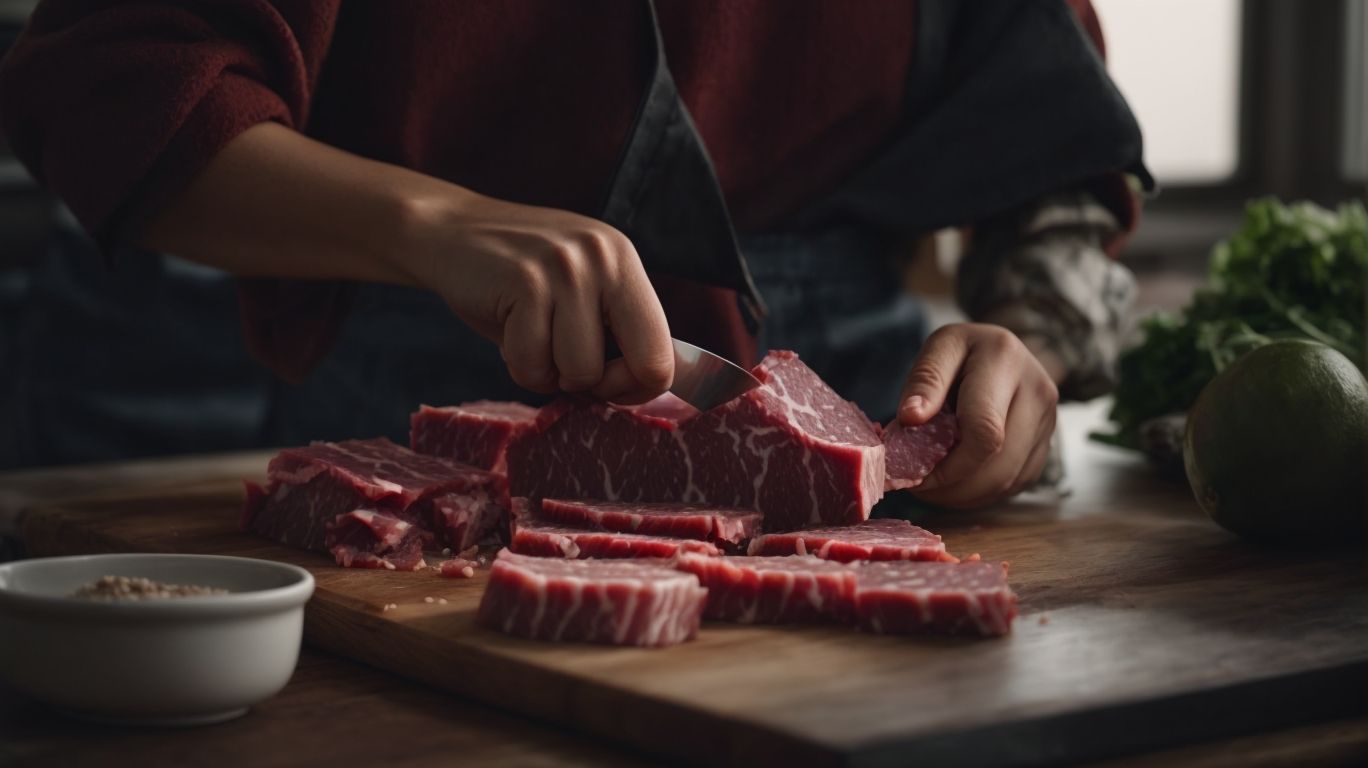
Credits: Poormet.Com – Randy Nguyen
To prepare the beef for Nilagang Baka, begin by simmering meat in a broth infused with aromatic spices over low heat, ensuring the beef cubes are tender and flavorful.
Simmering plays a crucial role in this Filipino dish, as the gentle heat transforms tough cuts of beef into succulent, melt-in-your-mouth pieces. When simmering, make sure the liquid doesn’t boil vigorously; instead, maintain a gentle bubbling motion to slowly break down the connective tissues in the meat.
The broth used for Nilagang Baka is typically flavored with onions, garlic, peppercorns, and bay leaves, creating a rich base that seeps into the beef during the slow cooking process. This infusion of flavors not only enhances the taste of the meat but also imparts a comforting aroma to the dish.
Ensuring that the beef is cooked until tender is paramount. As the meat simmers, it gradually softens, making it easier to chew and enjoy. This slow cooking process allows the flavors to meld together, resulting in a hearty and satisfying meal that is perfect for any occasion.
What Vegetables Can Be Added to Nilagang Baka?
Nilagang Baka offers a delightful array of vegetables like soft bok choy, peppercorns for depth, and other hearty greens that complement the beef stew’s flavors.
When selecting vegetables for Nilagang Baka, it’s essential to consider a combination that not only adds vibrancy but also texture to the dish. The soft bok choy provides a pleasant leafy green element, while the peppercorns bring a subtle spiciness that enhances the overall richness of the stew. Plus these staples, other excellent options include crunchy carrots, earthy potatoes, and sweet corn kernels. The medley of flavors and textures from these vegetables allows for a well-rounded and satisfying meal. Experimenting with different vegetables can add a unique twist to this traditional Filipino dish.
What Are the Common Vegetables Used in Nilagang Baka?
Common vegetables found in Nilagang Baka include vibrant bok choy, aromatic celery for depth, and savory onions that infuse the stew with rich flavors.
Carrots are often added to provide a hint of sweetness and vibrant color to the dish. The soft, buttery texture of potatoes adds a comforting element, while enhancing the overall heartiness of the soup. Another common ingredient is corn on the cob, which offers a burst of freshness and a subtle crunch.
Together, these vegetables work harmoniously to create a flavorful and well-rounded broth that is both nourishing and satisfying. Each component plays a crucial role in balancing the flavors and textures, making Nilagang Baka a wholesome and delicious Filipino comfort food.
How to Prepare and Cut the Vegetables for Nilagang Baka?
When preparing vegetables for Nilagang Baka, ensure they are cut uniformly for even cooking, added to the pot with care, to maintain a clear and visually appealing broth that enhances the overall presentation.
Uniformity in vegetable cutting is crucial to ensure that they cook evenly and impart their flavors uniformly throughout the dish. Start by washing and peeling root vegetables like carrots and potatoes before cutting them into evenly sized chunks or slices. Leafy greens such as cabbage or bok choy can be cut into manageable pieces to prevent them from disintegrating during cooking.
As you add the vegetables to the pot, do so in an orderly manner, with denser and longer-cooking vegetables like carrots and potatoes added first. This technique ensures that all vegetables are cooked to perfection without becoming mushy or overcooked. By incorporating these steps, you’ll not only elevate the taste of your Nilagang Baka but also enhance its aesthetic appeal with vibrant and well-prepared vegetables.
What Spices and Seasonings Are Used in Nilagang Baka?
Nilagang Baka is infused with a depth of flavors from aromatic star anise, balanced with hints of salt and pepper to create a harmonious blend of seasonings in the stew.
Star anise, with its distinctive licorice-like taste, adds a rich, sweet undertone to the broth, giving Nilagang Baka its signature flavor profile. This spice not only imparts a unique taste but also enhances the overall aroma of the dish, making it inviting and comforting.
Regarding seasoning, salt plays a crucial role in highlighting the natural flavors of the ingredients, while pepper adds a subtle kick of heat that complements the other spices. The right amount of salt and pepper ensures a well-balanced taste that tantalizes the taste buds.
What Are the Common Spices and Seasonings Used in Nilagang Baka?
Common spices and seasonings in Nilagang Baka include aromatic celery, savory salt, flavorful pepper, and the umami richness of fish sauce, creating a harmonious blend of flavors in the stew.
Celery, with its fresh and herbaceous notes, adds a subtle earthy undertone to the broth.
The addition of salt not only enhances the natural flavors of the beef and vegetables but also helps to balance out the dish.
Pepper provides a gentle heat and a hint of spiciness, bringing depth to each spoonful.
Fish sauce, a staple in Filipino cuisine, contributes a savory complexity and depth of flavor that elevates the entire dish.
How to Cook Nilagang Baka?
Cooking Nilagang Baka involves a meticulous process of simmering to create a rich beef soup, tenderizing the meat through the breakdown of connective tissues for a flavorful outcome.
Simmering plays a crucial role in Nilagang Baka as it allows the meat to gently cook at a low and steady heat. This slow cooking process helps break down tough collagen into gelatin, resulting in a tender and succulent meat texture. The connective tissues in the beef, such as ligaments and tendons, release natural flavors and contribute to the viscosity of the broth. By simmering the beef with aromatic herbs and spices, the broth absorbs these flavors, creating a depth of taste that is characteristic of this Filipino dish.
What Are the Steps for Cooking Nilagang Baka?
The steps for cooking Nilagang Baka involve simmering the beef in a luscious broth to extract marrow from the bones, infusing the stew with rich flavors and nutrients.
After selecting high-quality beef cuts and preparing your fresh ingredients, the first crucial step is to place the beef in a large pot and cover it with beef broth. This robust broth not only adds depth to the dish but also aids in extracting the marrow from the bones, which enhances the nutritional profile of the stew.
Simmer the beef over low heat, allowing the flavors to meld together and the marrow to enrich the broth. The slow cooking process ensures that the meat becomes tender and juicy, while the marrow adds a velvety richness to the stew.
What Are Some Tips for Cooking the Perfect Nilagang Baka?
To cook the perfect Nilagang Baka, use hearty beef chuck for robust flavors, enrich the broth with quality beef broth, and select fresh and vibrant vegetables to elevate the dish.
When preparing the beef chuck, ensure to cut it into manageable pieces to allow for even cooking and absorption of flavors. Start by searing the meat in a hot pot to create a flavorful base before adding the beef broth.
For a truly rich broth, consider adding aromatics such as onions, garlic, and peppercorns. These ingredients will infuse the broth with depth and complexity, enhancing the overall taste of the dish.
When selecting vegetables, opt for a variety of colors and textures to create a visually appealing and well-rounded meal. Popular choices include cabbage, potatoes, and green beans, all of which contribute to the dish’s heartiness.
What Are Some Variations of Nilagang Baka?
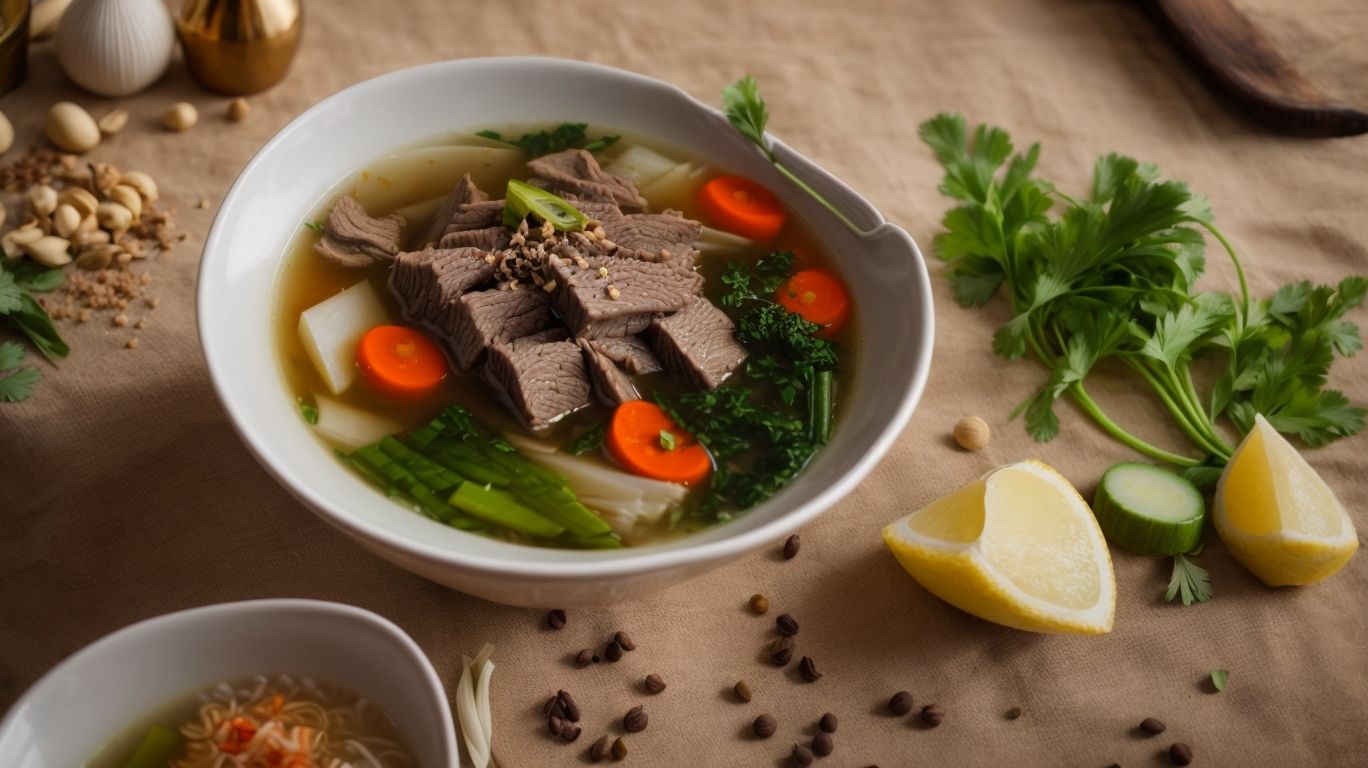
Credits: Poormet.Com – Lawrence Allen
Nilagang Baka presents diverse regional variations that adapt the traditional recipe to local preferences, offering healthier options by altering beef cuts and incorporating techniques to tenderize the meat.
In some regions, Nilagang Baka may feature different spices or additional vegetables to enhance flavor and nutrition. For instance, in the Visayas, the stew might include a touch of calamansi to add a zesty kick, while in Northern Luzon, they may use more root crops like sweet potatoes for a heartier dish. Health-conscious adaptations may opt for leaner beef cuts like sirloin or tenderloin, reducing fat content without compromising taste. These modifications demonstrate the culinary flexibility of Nilagang Baka to suit varying tastes and dietary preferences across different regions.
What Are the Different Regional Variations of Nilagang Baka?
Different regions offer unique variations of Nilagang Baka, each showcasing distinct preferences in the choice of stew meat, beef broth consistency, and flavor profiles.
In the southern regions, Nilagang Baka typically features tender cuts of beef like shank or brisket, enhancing the dish’s succulence and rich flavor. The broth is often simmered for longer periods to achieve a thicker consistency, resulting in a heartier stew. Southern variations commonly incorporate banana peels or plantains for a subtle sweet undertone, adding complexity to the overall taste.
How to Make a Healthier Version of Nilagang Baka?
Crafting a healthier version of Nilagang Baka involves using leaner beef cubes, focusing on lean cuts that reduce fat content while still benefiting from connective tissues that create a gelatinous broth for added richness.
When selecting beef for Nilagang Baka, opt for cuts like sirloin, round, or tenderloin, which are lower in fat compared to ribeye or chuck.
Leaner beef not only contributes to a healthier dish but also ensures a lighter broth without compromising on flavor. By trimming excess fat before cooking, you can further reduce the overall fat content of the dish.
The presence of connective tissues in lean beef cuts plays a crucial role in the cooking process. These tissues break down during slow cooking, infusing the broth with depth and developing a satisfying texture.
Serving and Enjoying Nilagang Baka
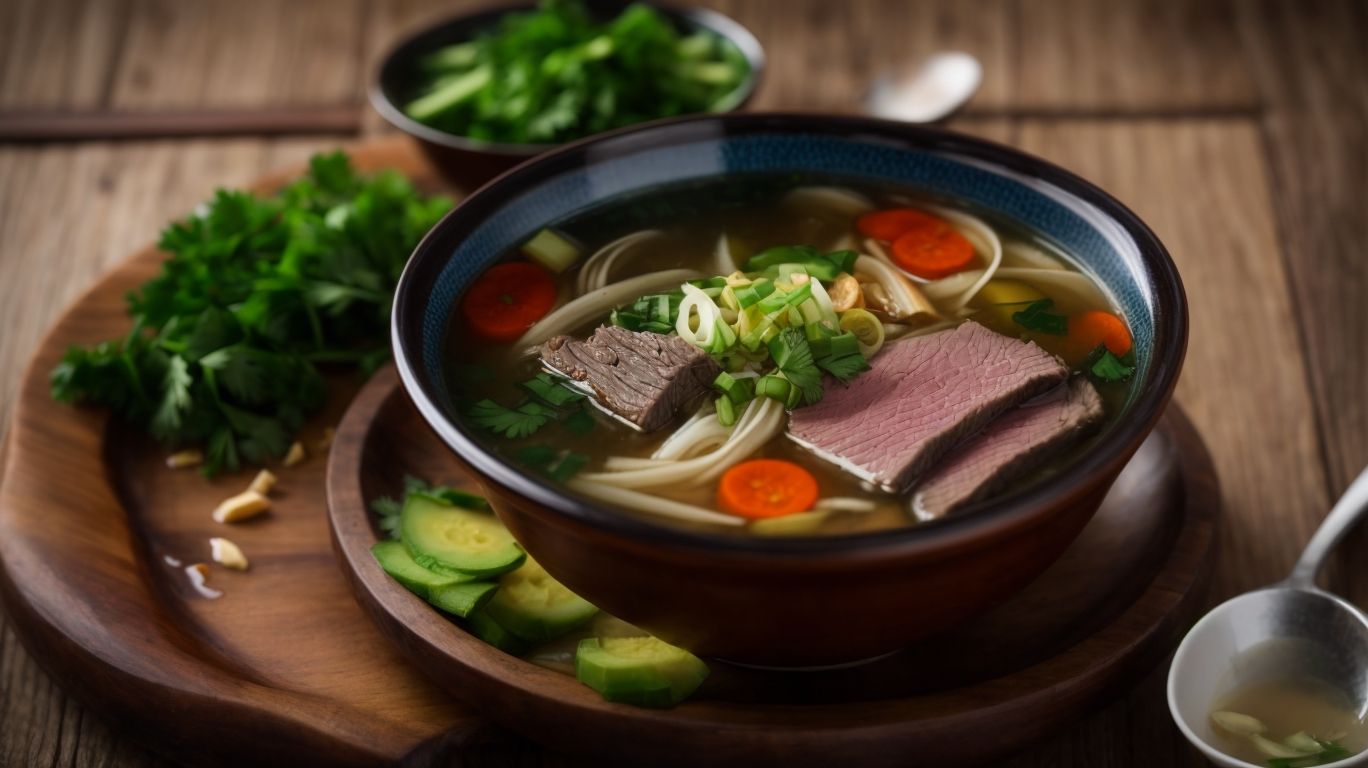
Credits: Poormet.Com – Carl Lee
Nilagang Baka serves as a comforting meal with robust flavors, showcasing the harmonious blend of vegetables, tender meat, and savory broth that delights the palate and warms the soul.
From the first spoonful, one can feel the soothing warmth that emanates from the rich broth, which has simmered for hours to infuse every ingredient with its essence. The tender chunks of beef, delicately cooked to melt-in-your-mouth perfection, offer a hearty and satisfying bite.
The medley of vegetables, such as cabbage, potatoes, and carrots, adds both texture and a burst of freshness, balancing the richness of the meat and broth. This classic Filipino dish is not just a meal; it’s a culinary experience that brings comfort and joy with every flavorful sip.
Frequently Asked Questions
What is Nilagang Baka?
Nilagang Baka is a traditional Filipino beef soup dish made with tender beef, vegetables, and broth. It is a hearty and comforting dish that is commonly served during cold or rainy days.
What ingredients do I need to cook Nilagang Baka?
To cook Nilagang Baka, you will need beef shanks, water, onions, garlic, potatoes, cabbage, green beans, corn on the cob, fish sauce, and black peppercorns. You can also add other vegetables and herbs according to your preference.
How do I prepare the beef for Nilagang Baka?
To prepare the beef, cut it into cubes and remove any excess fat. Then, boil it in water for about 15 minutes to remove any impurities. Rinse the beef with cold water before using it for the soup.
What is the best way to achieve a flavorful broth for Nilagang Baka?
To achieve a flavorful broth, use beef bones or beef broth in addition to the beef shanks. Simmer the soup for at least 2 hours to allow the flavors to develop. You can also add a bay leaf, onion skins, and celery for added depth of flavor.
Can I use a slow cooker to cook Nilagang Baka?
Yes, you can use a slow cooker to cook Nilagang Baka. Simply follow the steps of the recipe, but instead of using a pot, transfer everything to a slow cooker and cook on low for 6-8 hours or on high for 3-4 hours.
What are some common side dishes to serve with Nilagang Baka?
Nilagang Baka is usually served with steamed rice and a dipping sauce made of fish sauce, calamansi, and chili peppers. Other common side dishes include fried or steamed dumplings, pickled vegetables, and crispy fried fish.

